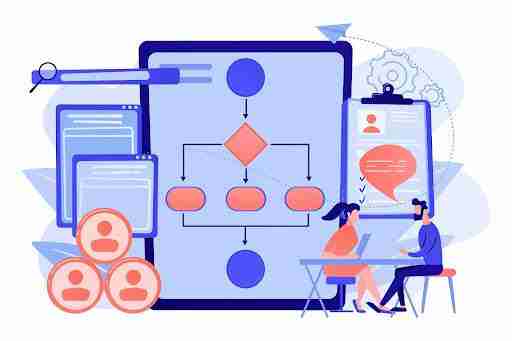
Resource management is a critical aspect of any organization’s success. It involves the strategic planning and allocation of resources to achieve specific objectives efficiently. In this comprehensive guide, we will delve into the intricacies of resource management, exploring its importance, key components, challenges, best practices, and the role of technology.
1. Introduction
Effective resource management is the backbone of a thriving business. From human resources to finances and technology, optimizing these assets ensures smooth operations and drives growth. In this article, we will navigate the various facets of resource management, providing insights and strategies for organizations of all sizes.
2. Understanding Resource Management
2.1 Importance of Resource Management
Resource management is crucial for maintaining a competitive edge. Proper allocation of resources ensures that projects are completed on time and within budget, enhancing overall productivity and customer satisfaction.
2.2 Key Components
Exploring the fundamental components of resource management, such as personnel, finances, and materials, lays the foundation for effective planning and utilization.
3. The Role of Technology
3.1 Resource Management Tools
In an era driven by technology, leveraging resource management tools becomes imperative. We’ll explore software solutions and platforms designed to streamline the resource allocation process.
3.2 Integrating Technology for Efficiency
Learn how integrating technology into resource management processes can enhance efficiency, accuracy, and real-time decision-making.
4. Challenges in Resource Management
4.1 Identifying and Overcoming Bottlenecks
Uncover common challenges in resource management and strategies to identify and overcome bottlenecks that hinder organizational progress.
4.2 Balancing Workload and Resources
Achieving a delicate balance between the workload and available resources is essential for sustained success. Discover practical tips for achieving this equilibrium.
5. Best Practices for Effective Resource Management
5.1 Clear Communication Channels
Effective communication is at the core of resource management success. Learn how to establish clear channels for transparent information flow.
5.2 Prioritization and Allocation Strategies
Explore best practices for prioritizing tasks and allocating resources effectively to ensure optimal project outcomes.
5.3 Continuous Monitoring and Evaluation
The journey doesn’t end with allocation; continuous monitoring and evaluation are key for adapting to changing circumstances and improving future resource management strategies.
6. Benefits of Efficient Resource Management
6.1 Cost Savings
Discover how efficient resource management directly translates into cost savings, contributing to the overall financial health of the organization.
6.2 Improved Project Timelines
Efficient resource allocation leads to timely project completion. Explore how this impacts project timelines and enhances client satisfaction.
6.3 Enhanced Team Morale
A well-managed and balanced workload fosters a positive work environment, boosting team morale and collaboration.
7. Real-life Case Studies
7.1 Successful Resource Management Stories
Delve into real-life examples of organizations that have successfully implemented resource management strategies, highlighting the positive outcomes.
7.2 Learning from Failures
Examining instances of resource management failures provides valuable lessons and insights into avoiding similar pitfalls.
8. Future Trends in Resource Management
8.1 Artificial Intelligence and Predictive Analytics
Explore how emerging technologies like AI and predictive analytics are shaping the future of resource management.
8.2 Remote Work and Virtual Resource Management
The rise of remote work necessitates innovative solutions for virtual resource management. Discover trends and strategies for adapting to this new paradigm.
9. Steps to Implement Effective Resource Management
9.1 Assessing Current Resources
Before implementing changes, organizations must assess their current resources. Learn how to conduct a thorough evaluation to identify strengths and weaknesses.
9.2 Creating a Resource Management Plan
Developing a comprehensive resource management plan is essential for aligning organizational goals with available resources.
9.3 Employee Training and Development
Explore the importance of training and developing employees to adapt to new resource management strategies and technologies.
10. Overcoming Resistance to Change
10.1 Building a Culture of Adaptability
Resistance to change is common. Discover strategies for fostering a culture of adaptability within the organization.
10.2 Incentivizing Positive Change
Explore methods to incentivize positive changes in resource management practices, ensuring a smooth transition for the entire team.
11. Sustainability and Resource Management
11.1 Environmental Considerations
Incorporating sustainability into resource management practices is not just a trend but a necessity. Learn how to balance business objectives with environmental responsibility.
11.2 Balancing Corporate Social Responsibility
Explore ways to align resource management strategies with corporate social responsibility, contributing to a positive corporate image.
12. Resource Management in Small Businesses
12.1 Tailoring Strategies for Small Teams
Small businesses face unique challenges. Discover strategies tailored to maximize limited resources and drive success for small teams.
12.2 Maximizing Limited Resources
Learn how small businesses can make the most of their limited resources, ensuring efficiency and competitiveness.
13. Continuous Improvement in Resource Management
13.1 Feedback Loops
Establishing feedback loops is crucial for continuous improvement. Discover how to gather feedback and implement changes to enhance resource management strategies.
13.2 Adaptive Strategies
In a dynamic business environment, adaptability is key. Explore adaptive strategies to ensure resource management practices evolve with the organization.
14. Common Misconceptions about Resource Management
14.1 Resource Management vs. Micromanagement
Distinguish between effective resource management and counterproductive micromanagement to foster a healthy work environment.
14.2 One-size-fits-all Approach
Challenge the misconception of a universal resource management solution and explore the importance of tailoring strategies to the unique needs of each organization.
15. Conclusion
Resource management is a multifaceted discipline that, when approached strategically, can transform the trajectory of any organization. From embracing technology to fostering a culture of adaptability, the journey toward efficient resource management is ongoing.